This article was written during the Bachelor Studies of Communication and Culture for a course on “New Media and Participatory Democracy”.
In 2011, during the “Arab Spring” many Islamic states citizens started to protest their national governments. To have better inter-group communication and to organise public rallies and protests, citizens used the social media platforms. Those directly involved in these events reported everything on the social media becoming eventually direct reporters, warning the world of what was happening in real-time. In the same year, a peaceful protest began also in Syria (Da’ra Province) but unfortunately, this protest was not welcomed by the Assad Regime. The events quickly escalated, transforming a protest into a siege and soon later into a civil war. In this civil war, many Syrian citizens with the help of social media and web platforms, recorded in first person the brutality of war, filming, and showing it. However, it should be considered that Citizen Journalism is just another way of creating UGC (User Generated Content), as there are many digital platforms and several typologies of media. Most importantly, some international press companies are making large use of this firsthand, direct user-generated content.
This article analyzes the media coverage of the Syrian civil war, with a closer look at the cases in which citizen journalism has been involved and the effects on Syrian citizens. The aim is to understand how social media is affecting citizen journalism with both benefits and risks and finally how social media has affected traditional press agencies. First, some important concepts and definitions will be given, such as social media, citizen journalism, user-generated content. These definitions are going to help the reader understand the argumentations and to have a better well-rounded understanding of the issue.
What is Citizen Journalism?
Citizen journalism is a direct way for common citizens to report instantly a fact, generally acts of violence, which will raise awareness and maybe help to start a protest (Flew: 2014). This means citizens have an activist attitude and are not professional journalists. Videos, posts, photos are posted on social media platforms allowing the public to witness these events, yet one must consider that these people put themselves at risk to record dangerous events.
What is User-generated Content?
User-created content is a term to refer to sites such as blogs, practices such as citizen journalism and platform such as YouTube, where users are empowered to become both creators and distributors of digital content (Flew: 2014). In other terms, UGC is every digital content such as photos, videos, audios, clips, and other things that are shared by the user.
The Importance of Social Media
In modern time, social media plays a central role not only in sharing information and news but also in interpersonal communication. People rely on social media to organize among friends, they use chatrooms and forum to share their opinions and ideas about several topics. Most importantly, it is a virtual space where people could meet to organize marches, protests, and rallies. According to experts, the concept of social media and UGC are strictly bound together. As Badoura (2013) writes, social media are a “built of content, communities and Web 2.0 technologies. Social media refers to applications that are either completely based on user-generated content or in which user-generated content and the actions of users play a substantial role in increasing the value of the application or service”.
Background on the Syrian Civil War
To understand the Syrian civil war, one must consider the bigger picture of the so-called “Arab Spring”. From 2011 many Islamic states including Libya, Tunisia, Morocco, Egypt, and Syria started to uprise against local regimes because citizens demanded social changes, better living conditions or wanted a new government to rule their country. In this scenario, Syria was the last country to experience uprisings, initially with little scattered protests in the countryside but soon repressed by the Syrian National Army. These peripheral acts of violence soon escalated into a major conflict that turned into a civil war among various religious and political groups where both local and international forces are still involved. The civil war is still ongoing, violence against the population made a portion of the Syrian people flee their country, while others chose to stay and report the war.
Role of Citizen Journalism in the Syrian Uprising
The lack of reporters and the off-limits area to accredited journalists just made retrieving information difficult for the international press. Therefore, citizen journalists play an important role in reporting information. “In covering conflicts such as Syria, where the government limits press access, user-generated content becomes fundamental” (CGCS: 2012). The platforms used by these people are Facebook, Twitter, YouTube and many others. Of course, to use these mediums bring both advantages and disadvantages because, in this new media scenario, the balance of power between traditional media and new media has shifted.
What kind of UGC comes out of Syria?
Most of the mediatic content show videos about Syrian protests, with “people chanting: no more fear” (Ghazzi: 2014), other videos show firefights between rebels and the Syrian army where citizen journalists like “Barakat who posted a YouTube video showing him trying to aid a wounded rebel fighter in the midst of battle. Unfortunately, he died while covering a battle between the Syrian army and rebels” (Ghazzi: 2014). As there are citizens’ journalists supporting the revolution, there is also Assad regime’s counter-propaganda, which is spreading videos and photos showing “regime fighters proceeding to beat and torture defenceless civilians in horrific ways” (Ghazzi: 2014). As the civil war became gruesome, videos and photos of killings and shootings became more frequent and by doing so, citizen journalism has transformed itself into a weapon of war.
Social Media used to denounce Diseases
In this complex scenario, there are also NGOs and doctors trying to save and cure the local population, especially children and women, since due to the precarious living standards, lack of medicines, electricity and water, people get sick easily. For this reason, “Doctor-Activists use social media as an alarm system for ‘war disease’ outbreaks in the Syrian Spring. Thus, social media are used as an alarm system to attract the attention of international organizations, which should assume their responsibilities and play their part in controlling the outbreak of such war diseases” (Alasaad:2013). By doing so, doctors can retrieve medicines to cure patients faster than before and highlighting disease outbreaks like leishmaniosis.
How International Press used Citizen Journalism
As mentioned above, some areas of the conflict are off-limits to international journalists, so western press and Arabic press rely on citizen journalist’s reportages and on data analysis on social media content. Aljazeera is a famous news channel that uses both Arabic and English, by doing so both local and global audience can be updated as the war goes on. As their political agenda is near to the anti-Assad opposition and do not want to endanger other of their journalists, they rely on citizen journalist footages. As established in the research of Khasib (2017), in “five Syrian events like Al-Bayda and Baniyas, the siege of Bab Amr, al Qusair and Khalidiya in Homs, Yarmouk camp and chemical on Al Gota, results shows that Aljazeera uses a significant number of footages and contents which came from Syrian citizen journalists; it is presented as 46.3 %”.
The western press, journals like The Guardian or The New York Times instead focus the attention especially on the Humanitarian Crises, as the western audience is more sensitive to this topic. In fact, Fadi Jaber (2016) established that there are “326 news texts, specifically 177 news texts from The Guardian and 149 news texts from The New York Times from March 2011 to February 2014” regarding the humanitarian crises. Like their colleagues from Aljazeera, they also rely on citizen journalists. “This humanitarian disaster has captured the attention of global media, which continue to play a decisive role in narrating and representing this event through relying and translating Syrian citizen journalists’ quotations and narratives as their primary news sources” (Jaber: 2016). It could be said that both western and Arabic press rely on citizen journalism footages and reportages, but the framework is different because of cultural sensitiveness and physical distance.
How much Social Media boosted Citizen Participation?
At the beginning of the early protests, Syrian citizens used more flyers and paper rather than social media to organize among them since the fear for retaliation was indeed higher than expected. As soon as the rebellion grew and more people joined in, the use of social media became more effective, not for organizing gatherings but to spread information. “Digital media became an intrinsic part of protests in the sense that the very organization of protests seemed centred around how they were going to be recorded and how the footage was to be distributed. […] Activists developed expertise in directing amateur videos many times with the intention of making protests appear more crowded on camera. More importantly, the network of Syrian activists and news media grew stronger” (Ghazzi: 2014).
How this new Social Media Environment has affected traditional Journalism?
“The revolution in Web 2.0 user interactivity and computer-mediated-communications through blogs, comment strands, and social networking sites continues to challenge newsroom and organizational culture” (CGCS: 2014). This means that the foreign press agencies have adapted to this new environment, otherwise they would have been outmatched. The first step for traditional media has been to consider social media platforms as a new space for news source. Then, gatekeepers decided to use UGC and to give it a structured format: “The gate-keeping approach may offer a model for the integration of UGC, with professional news organizations providing editorial structures to bring different voices into their news reporting, filtering and aggregating UGC in ways they believe to be useful and valuable to their audience” (CGCS: 2014). Yet another important factor is the rapidity of information acquisition. It is safe to affirm that news spread faster on social media platforms rather than in a press agency, especially in a warzone like Syria, where having posted news could mean life or death. The foreign press agencies have again adapted to this situation, accuracy and verification in reporting is fundamental to maintain a good reputation. For example, “the BBC position is that: We would rather be right than first” (CGCS: 2014). The BBC is not the only one to have this policy, so it could be affirmed that there is more attention towards a qualitative content, rather than quantitative.
Activism in Syrian Context – Advantages and Disadvantages
Syrian citizen journalists risk their lives every day to report the ongoing conflict and many of them have already died. Moreover, they endanger their own families, as there could also be retaliation against them. During a firefight, one could be killed. In order to prevent this, Aljazeera online advice is: “Please do not endanger yourself or put others at risk or take any unnecessary risks or violate any laws”. When an activist uses Facebook, YouTube or Twitter, there is a possibility to be identified and then arrested or worse tortured. To prevent this, most of the times activists cover their faces. Before the war, Assad had complete control over the Syrian news network but because of these activists, things changed radically. As a countermeasure, the Assad regime has launched a count propaganda both with direct, personal threats and by spreading false information. For example: “an Arab journalist interviewed an eyewitness testimony from a ‘newly arrived’ Syrian refugee in Lebanon covered in blood. When the journalist returned the next day, the same man was retelling his story to another journalist, covered once more in ‘fresh’ blood having just escaped Syria” (Khasib: 2017). For a matter of validity, it is important both to verify the sources and to upload news to safe sites where anonymity and security can be guaranteed. Despite these circumstances, thanks to the work of citizen journalist’s news keep streaming out of Syria. And now that activism has become more structured and thanks to external international support, activist have also become more confident (Khasib: 2017).
Role of Social Media to communicate to the International Sphere
Syria is undergoing a vast humanitarian crisis, where there is a huge number of innocent victims, people fleeing or reduced to starvation, refugees, and outbreak of diseases. Thanks to the constant streaming of news, videos and photos through social media, activists succeeded in raising the awareness of the global audience. Soon after the war began an increasing amount of NGOs and volunteers arrived in Syria to help the population with first aid, supplies and foo. Some of them are: Save the Children, UNHCR, FAO, Medics sans frontiers (Alasaad: 2013).
Conclusion
This article has analyzed several case studies about the media coverage of the Syrian civil war. In this context, a new kind of journalism, citizen journalism, has reshaped the usage of social media which belong to the new media scenario of the Web 2.0 and the role of traditional media. In the first part, we have seen that there is a huge amount of content regarding the war and the humanitarian crises. Most importantly, it should be said that without the efforts of citizen journalist, foreign press and public would not be able to know what is going on in the off-limits area of the country, so they play a central role in the conflict reporting. Because of the dangerous situation, international press prefer most of the time to receive news and reports from local activists. Then, it could be affirmed that social media has shaped a new kind of journalism, where UGC gets verified, controlled and broadcasted with a proper structure and format. But most importantly, the focus has shifted towards qualitative contents. Finally, social media is now considered an official source of news. From another point of view, social media may also endanger activists as they might be tracked down and killed but their work is vital to denounce violence against innocents and the humanitarian crises.
Future Developments for Citizen Journalism?
Hopefully, citizen journalism will soon become more stable and citizens will be more protected. It is not a surprise that, during the Arab uprisings, citizens used the same modus operandi to organize gathering and protests. In the case of Syria, activists are showing both great courage and increasing skills in reporting.
To conclude, the example of Syrian activism may be a model for other activists around the world. Finally, citizen journalism may become more connected to NGO organizations or press agencies, because real-time news on social media have become the new frontier of information.
Sources
Fadi Jaber, 2016 “Representing, Narrating, and Translating the Syrian Humanitarian Disaster in The Guardian and The New York Times”, Global Media Journal — Canadian Edition
Juliette Harkin Kevin Anderson Libby Morgan, 2012, Deciphering User-Generated Content in Transitional Societies: A Syria Coverage Case Study, Center of Global Communication Studies
Khasib N, 2017 Citizen, mainstream and peace journalism relationship in covering Syria events: a content analysis of Aljazeera
Omar Al-Ghazzi, 2014, “Citizen journalism” in the Syrian uprising: Problematizing Western narratives in a local context”
Reliefweb (2012): Deciphering User-Generated Content in Transitional Societies: A Syria Coverage Case Study, https://reliefweb.int/sites/reliefweb.int/files/resources/InternewsWPSyria_2012-06-web.pdf
Samer Alasaad, 2013 War diseases revealed by the social media: massive leishmaniasis outbreak in the Syrian, Parasites & Vectors
Badoura Sara, The role of social media in the Arab Spring
Flew Terry, 2014, Web 2.0 concepts chapter

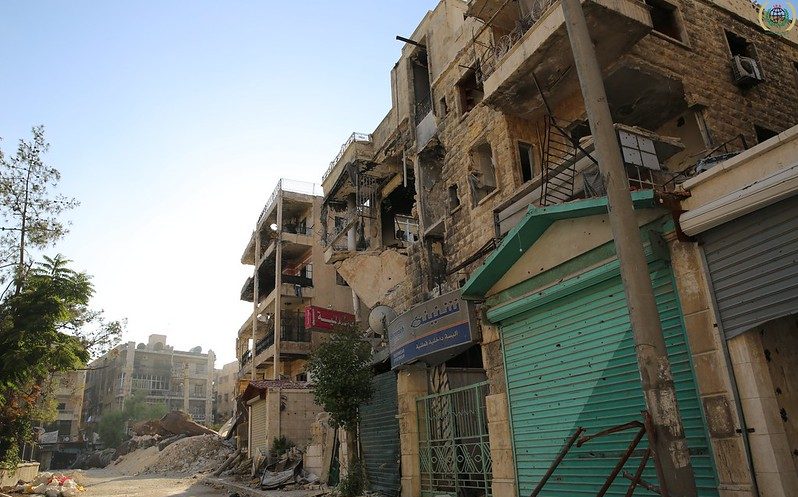
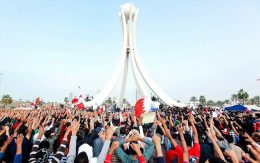
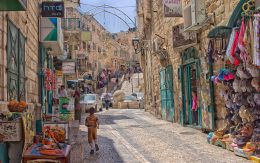
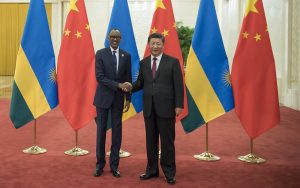
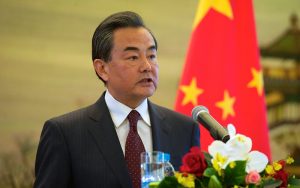

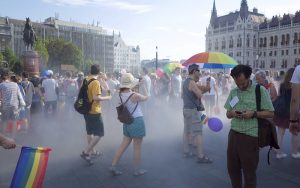

Be First to Comment